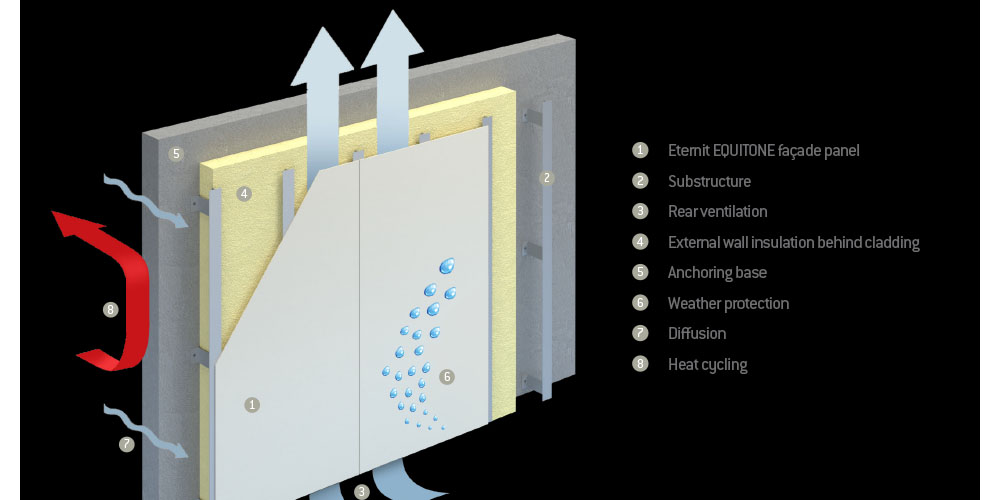The term insulation refers to covering or coating the spaces in a building or facility to minimize loss and absorption of heat (heat transfer). Therefore, insulation panels are blocks that are installed within the walls, ceilings, and floors of a building to prevent heat transfer. The market features a wide range of insulation panel types and materials, like sandwich panels and rock wool insulation materials. Insulation can also be achieved through cladding or facade cladding systems. This write-up looks into the basics of façade cladding, including façade cladding system components.
What is a cladding system?
Before discussing a façade cladding system, you must first understand the meaning of a cladding system. A cladding system is a collection of products uses for decorative or protective purposes. The products are used to cover walls, ceilings, and the roofs of varying facilities. The types of materials include wood, concrete, steel, and PVC.
What is a façade cladding system?
A façade system is a form of cladding structure that leaves a ventilated chamber between cladding and insulation. Façade cladding systems help eliminate thermal bridging and condensation issues within facilities. The systems also help achieve outstanding thermal behavior and minimize humidity. For this reason, façade cladding systems are considered the most effective insulation system. This is also the reason why they are applied widely.
Components of a façade cladding system
As the name suggests, façade cladding is a system. The word system refers to a group of elements. Below are the primary components of façade cladding systems;
1. Thermal insulation
One of the most critical components of this system is thermal insulation. As explained before, the role of cladding is to help with the insulation of a building. Thermal insulation is the process of minimizing heat transfer between objects in thermal contact. It is also used for objects that are in the range of radiative influence. The thermal insulation component of a façade cladding system is made up of low thermal conductivity materials. The various materials are combined to achieve an even lower thermal conductivity than most systems. The thermal insulation component is the most critical part of a façade cladding system.
2. Aluminum frame
The aluminum frame is the component that holds all the other elements of the façade system. It is made of aluminum because it is one of the most robust and most durable metals. It is highly durable and issues sufficient protection for the other components of the system. In the system, aluminum cladding is applied.
3. The ventilated façade panels
The system also consists of façade panels made of different materials. The panels are ventilated to create an air chamber between the insulation and the cladding. These components also help with the constant discharge of water vapor, hence eliminating humidity.
Conclusion
A façade cladding system is not difficult to understand. All you need to do is grasp the various components of the system and how they work. Doing this will help you understand how the entire system functions. Note that each element of the system plays an integral role in the performance of the insulation system.
